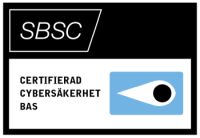Beskrivning
This course covers information and a range of administration actions executed on HPE SimpliVity systems using the SimpliVity vSphere and RapidDR User Interface to simplify and accelerate off-site DR through automation.
This course is intended for Infrastructure Administrators and System Engineers who are looking to learn how to administer HPE SimpliVity 380.
Objectives
Upon completion of this training the participant will be able to:
• Describe the HPE SympliVity 380 product physical characteristics and software architecture
• Use the HPE SimpliVity 380 vSphere User Interface for management tasks
• Use RapidDR to reduce service disruptions by automating remote site recovery
Prerequisites
HPE recommends that students have attended the following courses or attained the following levels of experience before taking this class:
• Networking technologies
• VMware vSphere 6
• HPE ProLiant Servers
Programme
Module 1: HPE SimpliVity overview
• The data problem
• The evolution of hyperconvergence
• HPE SimpliVity use cases / key business challenges
– Data center consolidation
– Data protection and disaster recovery
– VDI
– ROBO
– Hyperconvergence in a hybrid cloud
– High performance All-Flash Storage
• HPE SimpliVity 380 HyperGuarantee
• What is an HPE SimpliVity 380 system
– HPE ProLiant DL380 Gen10
– Models
– Components
– Management (including iLO)
– HPE OmniStack Virtual Controller (OVC)
– HPE OmniStack Accelerator Card (OAC)
– Disk Controller (RAID controller)
• HPE SimpliVity system architecture
– Node
– Cluster
– Federation
– Global scale
• Arbiter
• HPE SimpliVity 380 Networks
– Federation network
– Management network
– Storage network
– Network configurations
– Network security
Module 2: SimpliVity Data Virtualization Platform
• HPE SimpliVity 380 Data Virtualization Platform (DVP)
– Guaranteed data efficiency
– Deduplication and compression
– Built-in resiliency, backup, and disaster recovery
– Global VM-Centric management and mobility
– Data storage and VM cloning
– Writing data
– Remote backup
• HPE SimpliVity RapidDR
• Data virtualization platform deep dive
– Data presentation layer
– Data management layer
– File system
– Object Store I/O write path
– Cluster-level data management
– Federation-level data management
– Advantages
• I/O and capacity reduction
• Storage network
• Faster backup, restore, and clone
• Reduced WAN bandwidth
• Lower RPO and RTO
Module 3: HPE SimpliVity data management
• HPE SimpliVity data paths
– HPE OmniStack system architecture
– Write I/O path
– Read I/O path
– Stretched clusters
• Data Resiliency – How Is data protected
– Node-level resiliency
– Cluster-level resiliency
– Site-level protection
– RAIN + RAID overview
– Power resiliency
– Hardware RAID
– Preventing silent data corruption
– Enterprise-grade server platform resiliency
– HPE OmniStack Accelerator Card resiliency
• Effects of a failure (what happens to the data)
• Failover of the OVC IP
– OVC resiliency
• Effects of a failure (what happens to the data)
• Failover of the OVC IP
• Recovering a failed OVC
• vCenter resiliency
– Single and linked mode
• Data locality
– Overview of data locality
– Advantages of full data localization
– Intelligent Workload Optimizer
• Initial data placement
• Integration with vSphere DRS
Module 4: HPE SimpliVity user interface overview
• Getting started
• Features within the vSphere Web Client
• How to maneuver through the vSphere Web Client
• vCenter inventory list
• The SimpliVity federation actions
• SimpliVity federation home tab
– Topology tab
– Throughput tab
– Backup consumption tab
– About tab
– Inventory lists
Module 5: HPE SimpliVity Clusters and Datastores
• Clustersters
– Exploring clusters
– Customizing SimpliVity table data
– Viewing capacity
– Viewing performance
– Searching backups
• Datastores
– Creating a SimpliVity Datastore
– Modifying a SimpliVity Datastore
• Configuring ESXi access nodes
– Configuration steps
– NFS settings
– Verifying HPE SimpliVity Datastore access
Module 6: HPE SimpliVity backups
• SimpliVity backups
– Overview
– Manual backup
– Application consistent backups
– Managing backups
• Backups view
• Rename backup
• Copy backup
• Cancel backup
• Backup retention time
• Export backups
• Delete backups
– Backup policies
• SimpliVity backup policy overview
• Backup frequency
• Fixed default backup policy
• Locking a policy-based backup
• Creating backup policies and backup policy rules
• Edit backup policy
• Rename backup policy
• Delete backup policy
• Add backup policy
• Apply backup policy
Module 7: Other HPE SimpliVity features
• Hosts
• Virtual machines
• HPE SimpliVity restore
– SimpliVity restore overview
– Finding a backup
– Creating a new virtual machine
– Replacing an existing virtual machine
• SimpliVity file level restore
– Permissions and security
– Limits
– Partitions
– Restoring files steps
• SimpliVity clone
– SimpliVity clone overview
– SimpliVity clone a virtual machine
– VAAI and VMware clone
• SimpliVity move
– SimpliVity move overview
– SimpliVity move a virtual machine
• VM templates
• Moving an HPE SimpliVity node between clusters
• HPE OmniStack Virtual Controller (OVC) shut down
– Safe shut down preparation
– Other safe shut down considerations
Module 8: Extending HPE SimpliVity 380
• REST API
– REST overview
– HPE SimpliVity REST API functions
– HPE SimpliVity REST API examples
• HPE SimpliVity CLI
– Prerequisites for using the CLI
– Access through the Virtual Controller Console
– Access through a Terminal Emulator
– CLI Command privileges
– CLI Command format and examples
• HPE SimpliVity RapidDR
– What is RapidDR and how does it work?
– RapidDR requirements
– RapidDR configuration guidelines
Module 9: HPE SimpliVity 380 services and support
• HPE SimpliVity support plans
– Accessing support
– Accessing updates
– Customer self repair
– Remote support
• HPE SimpliVity 380 hardware services
– Phone home – HPE OmniWatch
– Support capture file
• Alarm and events overview
– SimpliVity Datastores overview
Lab outline
SimpliVity overview
• Accessing the HPE vLabs environment
• HPE SimpliVity user interface
• HPE SimpliVity federation home page
• Backup policies
Clusters
• Monitor tab
• Top contributors
• Manage tab
• Related Objects tab
Datastores
• Online resize
• Set default backup policy
• Delete Datastore
• Manage standard ESXi hosts
• Additional Datastore information
Virtual machines
• Backup virtual machine
• Search backups
• Restore virtual machine
• Replace existing virtual machine
• Restore files
• Rename backup
• Copy backup
• Lock backup
• Set retention time
• Calculate unique backup size
• Export backups
• Delete backup
Clone and move
• Clone virtual machine
• Move virtual machine
Creating and using HPE SimpliVity VM templates
Using HPE SimpliVity CLI
Using HPE SimpliVity REST API through PowerShell
Using HPE SimpliVity RapidDR
Kursen levereras i samarbete med








Recensioner
Det finns inga recensioner än.